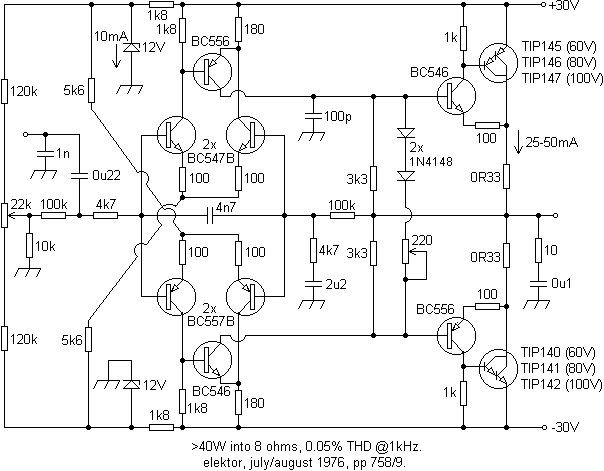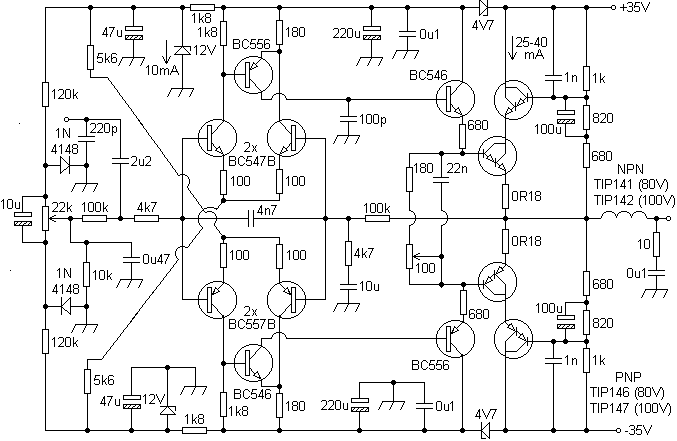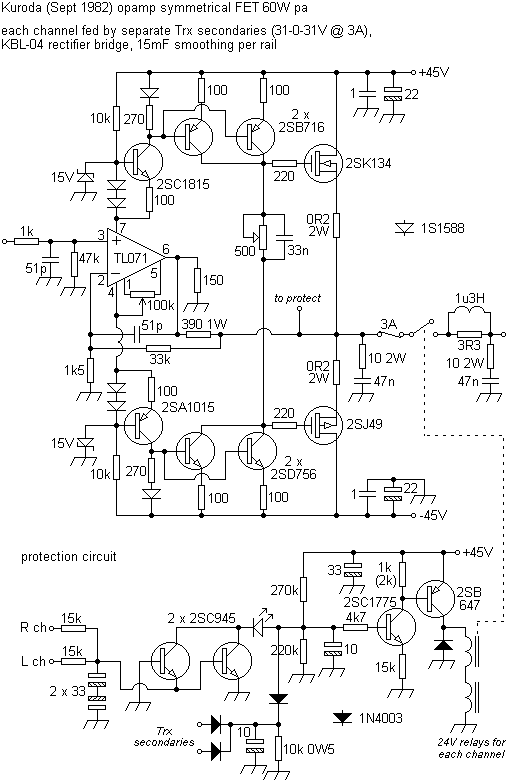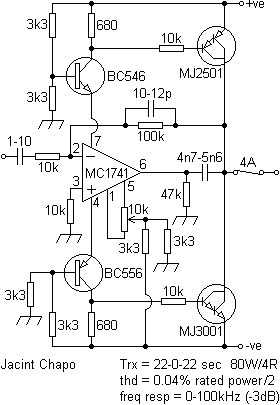Symmetrical power amplifier designs
In symmetrical amplifiers, associated transistor pairs should ideally be matched, complementary pairs (NPN/PNP) may then be required, matched both in Vbe and hFE. A relatively simple transistor matcher is described by Giesberts (elektor, 7-8/'97, p98-9).
Jean Hiraga's 8W 'Le Monstre' class A amplifier (1979) based on earlier work has received some acclaim. The supply for this differed from the norm by using mains power to charge two 12V 45AH batteries that fed the PA. Later more powerful versions have inspired examples like Dan W's Super Class A 30W which is worth a look too. John Curl's work in this field is notable, however, some designs proposed are heavily dependent on the close matching of active elements.
An interesting approach intended to reduce the number of large electrolytics. The first truly symmetrical design built by the author, this will run discrete complementary power transistors and has seen modification, as shown below. Symmetrical approaches have been seen as the way forward for a number of designers including Curtis, Linsley Hood, Giesberts, Stochino and others (Meridian, Lecson, Syntec, etc).

Paying attention to limitations in the earlier version, this used the output configuration used in the Beomaster 4400. Output transistors in series effectively doubles Vce increasing safe operating area (SOA). Reducing die operating temperature with multiple arrays of output devices should be weighed against cost, reliability, available heat-sinking and anticipated usage. >75W into 4 ohms. Further upgrading of the small-signal transistors is possible, as with the bandwidth (output transistors >1MHz). Input pairs were fixed to a single piece of copper to reduce effect of temperature differentials. Lower impedances, in respect of input and feedback networks, will reduce noise.

Advantages are gained when using an opamp for the input stages. Apart from the matching of characteristics, including those relating to thermal drift, the component count can be usefully reduced, as in the succinct example expressed by Kuroda (courtesy of Stephane Cnockaert). Compare with a later (1989), but more sophisticated PMI version, other 'op-amp' and IC designs.

Another simple symmetrical approach that has seen usage and adaptation, this later (2005) version by Jacint Chapo, with details for other lower power (>20W) versions at the same site.

Distortion can arise from transistor gain mismatches, quiescent current being set by the resistors feeding the driver's collectors. This approach can be improved upon by utilising, say, a NE5534 opamp and with a few extra components V-FET output devices. Clamping of the opamp's supply rails and output current limiting can also be considered.
especially if you want additional content to this page
or if you find any links that don't work. Don't forget
to add the page title or URL. Take care!